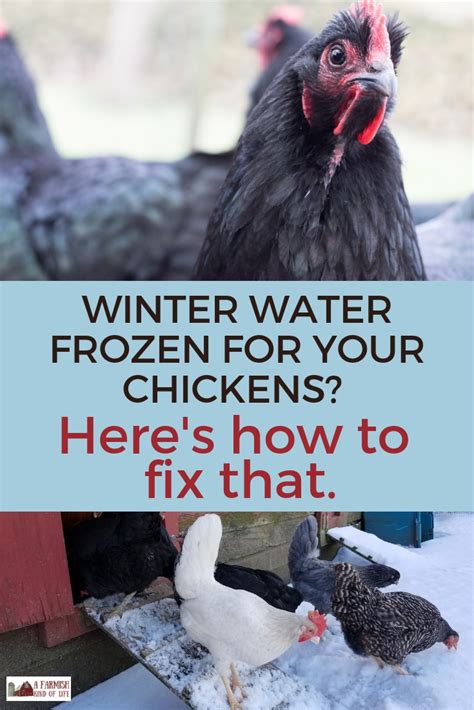How To Keep Animal Water From Freezing
Ronan Farrow
Apr 01, 2025 · 3 min read

Table of Contents
How to Keep Animal Water from Freezing: A Comprehensive Guide
Winter weather presents unique challenges for pet owners and livestock keepers alike. One of the most critical concerns is ensuring a consistent supply of fresh, unfrozen water for your animals. Frozen water can lead to dehydration, hypothermia, and even death. This guide provides practical solutions to prevent your animal's water from freezing, keeping them healthy and happy throughout the cold months.
Understanding the Problem: Why Water Freezes
Before diving into solutions, let's understand why water freezes. Water freezes at 32°F (0°C). When temperatures drop below this point, water transitions from a liquid to a solid state, rendering it inaccessible to animals. The rate of freezing depends on factors like air temperature, wind chill, and the type of water container used.
Effective Strategies to Prevent Water Freezing
Here are several proven methods to keep your animal's water from freezing, categorized for ease of understanding:
1. Heated Water Bowls
Heated water bowls are among the most effective solutions. These bowls use electricity or batteries to maintain a warm temperature, preventing the water from freezing. Key Considerations:
- Safety: Ensure the heating element is protected to prevent burns or electrical hazards for your animals.
- Power Source: Choose a reliable power source, especially if using an electric bowl, and consider backup options during power outages.
- Durability: Opt for durable, weather-resistant bowls designed to withstand harsh winter conditions.
2. Insulated Water Bowls
Insulated water bowls provide another effective layer of protection. These bowls are designed with materials that retain heat, slowing down the freezing process. Key Considerations:
- Insulation Material: Look for bowls made with high-quality insulation materials like neoprene or double-walled construction.
- Size: Choose a bowl size appropriate for your animal's water consumption needs.
- Cleaning: Ensure the bowl is easy to clean and maintain.
3. Placing Water Bowls Strategically
The location of the water bowl significantly impacts its susceptibility to freezing. Key Considerations:
- Shelter: Position the water bowl in a sheltered area, away from direct wind and drafts. A garage, shed, or even under a covered porch can make a difference.
- Sunlight: Sunlight can provide some warming effect. Placing the bowl in a sunny spot, especially during the day, can help.
- Ground Contact: Avoid placing bowls directly on the ground, as the ground itself can be cold and accelerate freezing. Use a raised platform or stand.
4. Frequent Water Changes
Regularly checking and changing your animal's water is crucial. Even with preventative measures, some freezing might occur, especially during extremely cold periods. Key Considerations:
- Frequency: The frequency of water changes depends on the temperature and your animal's water consumption. More frequent changes are necessary during colder periods.
- Water Temperature: Use lukewarm water, as very cold water will freeze faster.
5. Using Anti-Freeze (with caution!)
Propylene glycol-based antifreeze is sometimes used in livestock watering systems, but it's crucial to understand the risks involved. Propylene glycol is less toxic than ethylene glycol (the kind used in cars), but ingestion can still be harmful. Use only products specifically designed for animal use and follow the instructions carefully. Always supervise animals around any antifreeze solution and ensure they have access to another uncontaminated water source.
Choosing the Right Solution:
The best method for preventing water from freezing depends on several factors, including:
- Your animal's species and size: A large dog will require a larger and potentially more robust solution than a small bird.
- Your climate: Extremely cold climates might necessitate multiple strategies, such as combining a heated bowl with an insulated one.
- Your budget: Heated bowls are generally more expensive than insulated ones.
By carefully considering these factors and implementing one or more of the strategies outlined above, you can ensure your animals have access to fresh, unfrozen water throughout the winter, protecting their health and well-being. Remember to always prioritize your animal's safety and comfort.
Featured Posts
Also read the following articles
| Article Title | Date |
|---|---|
| How To Kasher A Microwave From Meat To Dairy | Apr 01, 2025 |
| How To Keep House While Drowning Review | Apr 01, 2025 |
| How To Make A Boat Bench Seat | Apr 01, 2025 |
| How To Kill A Garter Snake | Apr 01, 2025 |
| How To Keep Shattered Glass From Falling Out | Apr 01, 2025 |
Latest Posts
-
How Does A Smoke Tube Work
Apr 04, 2025
-
How Does A Regenerative Thermal Oxidizer Work
Apr 04, 2025
-
How Does A Pilot Light Go Out
Apr 04, 2025
-
How Does A Moment Last Forever Sheet Music
Apr 04, 2025
-
How Does A Generator Work Without Electricity
Apr 04, 2025
Thank you for visiting our website which covers about How To Keep Animal Water From Freezing . We hope the information provided has been useful to you. Feel free to contact us if you have any questions or need further assistance. See you next time and don't miss to bookmark.
